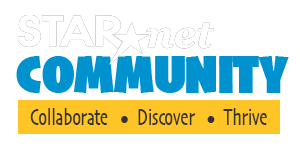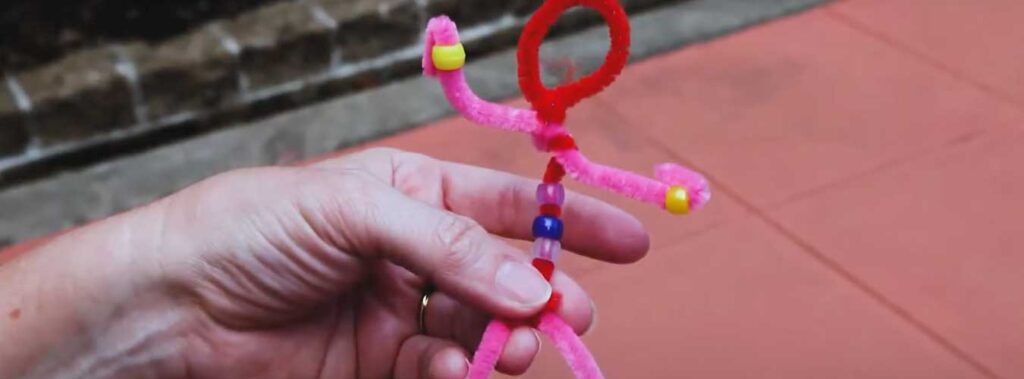How to Retain Customer Interest in STEAM Programs
This blog post was written for STAR Net by NASA@ My Library Mentor Valerie Marshall
About the Author
I have been offering Science, Technology, Engineering, and Math (STEM) related programs to the general public in science museums, continuing education classes, and libraries for over a decade. Many of my library customers call me “The Space Lady” because I have a telescope and a picture of an astronaut in my office, and I’m always encouraging my customers to check out telescopes or come to my STEM programs. I have worked at several smaller branches within a large library system, and introduces STEM initiatives at each branch and to my 38-branch system as a whole.
Ideas that have worked for Valerie
In a previous blog post, I discussed “How to Turn a STEM Experiment into a Library Public Program.” From that post I got some feedback saying it was easy to have a successful one-off STEM program, and asking how I maintain interest in STEM at my library over time? I think this is an important question that doesn’t get discussed enough, so I hope what has worked for me works for you, too.
Don’t call it STEM
When I first starter working as a professional librarian, I was excited to bring some of the public programs I had done at a science museum job into the library. I knew the programs were of interest to kids and teens especially, and I wanted to introduce them to a new audience. When I proposed starting a science club to my boss, she said I could try it, but it sounded a lot like school so she didn’t think many kids would come…until I told her what we would be doing, like making slime, building a town out of blocks, and mixing frosting colors to decorate cupcakes. She agreed those activities would attract an audience, but suggested I change the name. I called this program “Munchkin Mondays” and had an average of 50-80 kids show up weekly over several months. Once they kids were in the room and engaged with the activity, they didn’t mind learning about the science behind what we were doing, as long as they still got to have fun, get messy, and sometimes eat snacks.
Let everyone know: You don’t need to be an expert to lead or attend STEM programs
Staff can be just as reluctant as customers when they hear you want them to lead a STEM program, and customers can tell when staff is nervous or disengaged. When this happens, customers are less likely to return for more STEM programs. To get and maintain interest in STEM library programs, you need buy-in from your staff. A great way to get staff and customer buy-in is to be clear that you don’t expect anyone to be a Subject Matter Expert. It’s ok to tell your audience that you aren’t a scientist or an engineer, and that you got the activity you are hosting from a reputable resource, but you only know what was given to you in a lesson plan. Have staff experiment alongside customers, make mistakes, and laugh about them. Learn from your customers who may know more about the subject being discussed, or have a different idea for how to do the activity you planned. If customers have questions staff can’t answer, show them how to use library resources to find more information. This technique is called Guide on the Side, and it goes a long way to building staff and customer confidence in STEM programs.
Plan a series of events for a known audience
Just like in libraries, many local groups are looking for fun, engaging, educational, and cost-effective activities for their group to participate in. Libraries need that audience, but we are less likely to get local groups to commit to attending a single program because groups prefer to have consistency in their schedules. I’ve had great success planning my activities around the schedules of local homeschool groups, after-school programs, and even senior center bus schedules to ensure my programs have an audience. I tend to host program series that average 3-months for each group, either weekly or bi-weekly, similar to the way many libraries plan story time series. As a bonus, the same program plan can work for several different groups, because these groups are unlikely to have overlapping members.
Ideas that have worked for others
On Saturday, April 2, 2022, I co-hosted a a NASA @ My Library Affinity Group discussion through ALA Connect, and we discussed what customer retention techniques have worked for other libraries. Here’s what we all shared:
- Create a series of take and make kits with either connected challenges that can only be solved if you get multiple kits or a prize for completing multiple kits.
- Have staff play with STEM tools and kits in view of the public so customers engage with them and ask questions. Also encourage staff to play with STEM kits in the lunchroom so they are more comfortable with explaining and upselling these materials to customers.
- When doing STEM outreach, give students a reason to come back to the library for more STEM content, such as hanging their STEM art at the library and encouraging parents to come see the display.
- Work with a Subject Matter Expert or group of experts, such as an astronomers’ group to host recurring stargazing nights. To find an astronomer near you, check out the NASA Night Sky Network. You could also download the Stellarium software onto a library computer to simulate a recurring planetarium style show for customers.
- Use high-quality, pre-planned STEM programs to save staff planning time. Resources for STEM activities for libraries include:
- Market programs to the right audience and time your programs for that target audience.
- Valerie has had particular success marketing directly to local teachers through the school board or a public records request for public school teacher email addresses.
- Food brings people in and encourages them to return to programs. Some of the food-based programs we’ve done include:
- Oreo Phases of the Moon
- Build a (snack) Satellite – someone said they used vegetables in place of sweets and it was a big hit
- Skittles Kaleidoscope – Susan even had kids suggest drinking the water so there was no waste after this program.






Responses